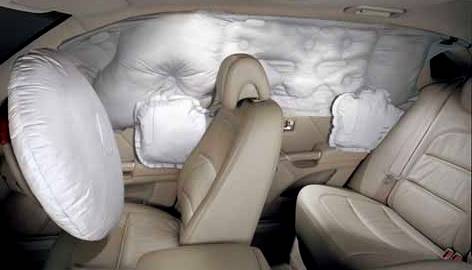| Explanation | ||||
|
Airbags are passive safety devices that was exclusive to high end vehicles as recent as the
1990's and The Supplemental Restraint System (SRS) airbag can now be found on all private and commercial
vehicles manufactured these days because of the value to passenger safety. Although airbags can be
found on the simplest of vehicles, their advancements over the years is what keeps them as a topic
worth discussing for high end vehicles. The airbag itself is made of nylon and is coated with either cornstarch, chalk or powder to keep the bags lubricated while in storage and preserve the life of the bag. The entire system contains sensors which sends a signal when they detect a collision at or above a pre determined force. This signal is used to rapidly heat nitrogen to inflate the bag(s). The above takes place in 20 to 30 milliseconds and the airbag should be deflated in under a second as hitting an airbag that doesn't deflate is almost as bad as hitting the steering or dashboard during an accident.
Research has also shown that a rollover accident may last longer than a direct collision so curtain and other airbags used to offer protection during a rollover will remain inflated for several seconds as opposed to inflation and deflation of other airbags in a second or less. They just take long to deflate but they still inflate at the required lightening speed. Airbags continue to add to the value and safety of high end vehicles and I don't see them going anywhere as long as vehicles continue to be manufactured. |
| External Links |
| Detailed Explanation Other Information Videos |
|
[?] Subscribe To This Site
|
| Random Topics |
| Other random topics of WhyHighEnd? |





